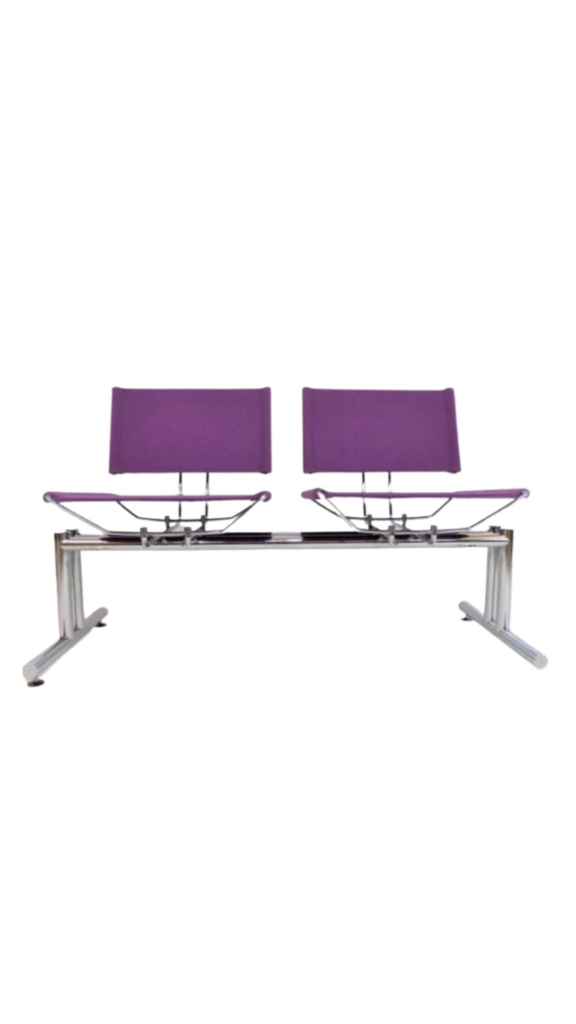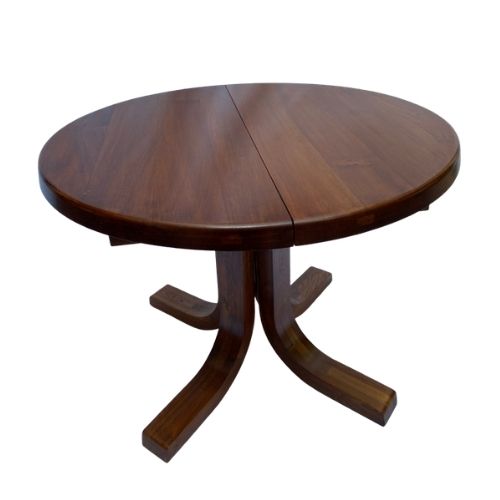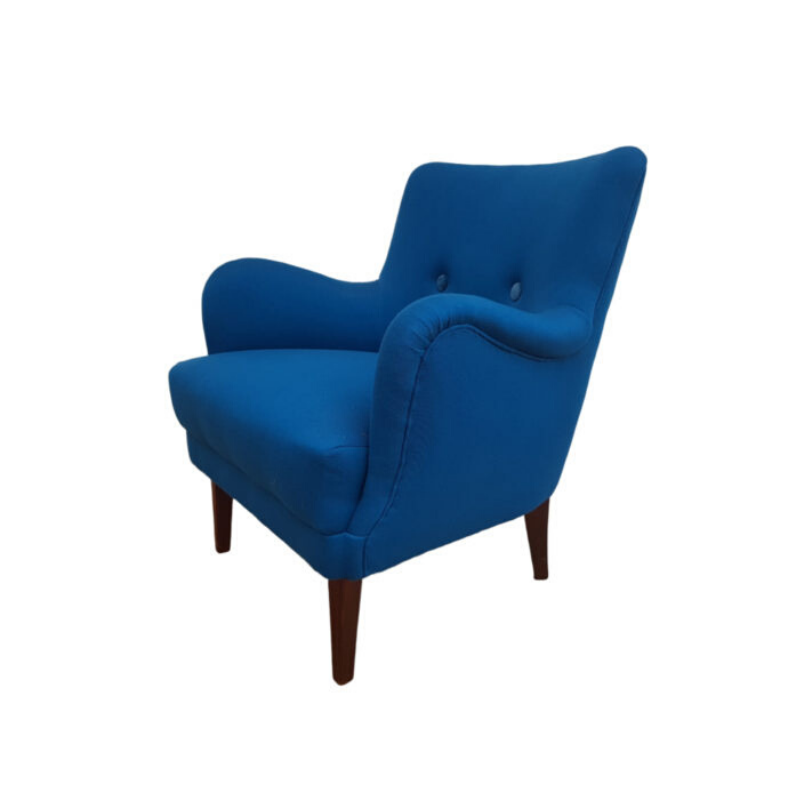Any one out there know any good book/video reference for someone that is beginning furniture making? It is something I have always been interested in and I would like to know more about handmade furniture and types of styles, joinery etc. Any help would be appreciated.
Thanks in advance!
Mike
.
May it go well for you, others will have advice too but mine would be - go to the library for books (flicking through a big stack will give you a better idea of what appeals to you than a suggestion from someone who doesn't know you), hang out on the finewoodworking site for fun, consider taking a few classes.
Start with simple things, softwoods and hand tools, you can get a few saws, a couple of planes, make a bench hook and shooting board etc and learn from the bottom up, something modest but sophisticated like the Mogens Koch shelves should be within your grasp with some practice.
Lee Valley/Veritas tools are fantastic value for money but it can be a bit of investment, rarely does it pay to buy cheap tools.
And you'll NEED a bench with a vise, if you want to take it seriously that should be a first project.
Excited on your behalf, best of luck and don't be discouraged if it doesn't go well at first.
http://www.toshen.com/woodworking-reviews02-07.htm
A bible and a reference book would top my list.
Eric Sloane - "A Reverence for Wood" If this one doesn't do it for you, find another avocation.
Ernest Joyce - "Encyclopedia of Furniture Making" The most often opened of all of my many books on joinery.
And then, of course, there are the other several hundred you'll also need to flip through.
I agree with Heath. Build a good set of basic hand tools and the skills to use them and sharpen them before plugging anything into an electrical outlet. Having two eyes that work and all ten fingers really helps.
One can rely
on the suggestions of Heath and tktoo.
"A few saws" is perhaps good advice -- but of different types, and one each, to start. I'd get:
A simple crosscut saw of the type shown above. Some very good ones today have plastic handles. Ripping (cutting with the grain) is best done on the table saw.
A Japanese pull saw, the one with a long blade with different teeth on the two edges.
A coping saw -- it needn't be the best, but a nice one will have better fittings to keep the blade true.
A second step would be a miter saw with its "box" and guides.
But, in my experience, so many of the functions performed by the first and last of these four saw types, will be performed on power tools. I note that our novice mentions furnituremaking, so my comments will be based on that hint.
Fine Woodworking magazine ran a survey of woodworkers some years ago, asking which basic shop power tools were thought essential. Many answered as I would, that the 10" table saw is first on the list. Yet at least one person replied that, for him, a band saw was preferable. It all depends upon what sort of work one is doing. I can't conceive of working without a table saw -- and my compound sliding chop saw gets a great deal of use. I've been using the same simple Stanley block place (somewhat like the one Heath shows above) for 3 decades, and I'm still on my first 3/4" Sandvik chisel after all this time. That shows that I have been dependent on power tools, which I value for the ease with which they can provide true work, with automatic repeatablilty of dimension.
All this is a bit much for the beginner, perhaps. Yet one wants to look forward to the future of one's work, and appreciate from the start that there are multiple kinds of "woodworking," each with its own library of tools.
Essential, and a part of all beginning steps, is to learn the nature of wood, and what it "wants" when one is attempting to turn this wonderful material into something of use and beauty. Eric Sloane's beautiful book will inspire and inform, as one absorbs the history and meaning of man's use of wood.
WOW! Thanks for those...
WOW! Thanks for those amazing responses! I am truly thankful for this forum and those who post useful information here! I think I will catch up on the
readings you guys have suggested and then take the next step and purchase some tools! Again thanks for the suggestions and helpful info!
.
Diffeent types of saw indeed, these are very good although if you're feeling like more of a traditionalist Lie Nielsen sell joinery sets that while expensive are excellent. I've gone back to more handwork, its cheaper, quieter and safer and unless you are batching out something often faster and more convenient, and the neighbours won't complain!
On the other hand I agree with SDR about the table saw...as he says it depends on what you want to do and you don't have to be a purist either, sometimes you'll want to use a machine one minute and a hand tool the next, who wants to hand cut a mortise? Not this guy, ever.
If you are finding yourelf wanting to take it seriously but can't afford the good tools just stop and save for it and sketch your ideas until you can, it is horrible having to struggle with poor quality gear...I wish someone had given me that advice 5 years ago.
Actually the LN set is only 1500 bucks, you'd still need a bench, a cross cut saw and some squares and marking out tools but 'd say for 2k you could set yorself up with top notch basic gear, some guys pride themselves on restoring old Stanleys and having a shop that looks like a museum, cool if you've got time for that sort of thing I suppose.
Then you need to get some wood....sorry thats probably all a bit too much info but I hope it helps. Actually that LN set is more limited than I thought.
http://www.lie-nielsen.com.au/catalog.php?grp=1460
I think thats true up to a...
I think thats true up to a point bit if you're new to it lapping a sole or repairing a handle or whatever are things you'll tend to have the skills, confidence and equipment for in a few years not when you're first starting out.
I missed the 'for me', apologies.
How do these Lie-Nielsen...
How do these Lie-Nielsen pieces compare in value for money?
When I look at the drawknifes advertised on the website for instance, I see prices 5 times what I pay in a local shop here in Belgium (orientated towords woodworkers) for carbon steel ones made by Arno/France (including the leather case, wich is 39$ alone on the Nielsen site).
I can't speak out of experience, but I'm looking at purchasing some hand tools for finishing of after more serial machine work.
When looking at the legs of a Moller 75 and the work involved, wich tools would you advise? (after turning most of the leg on the lathe)
With LN I think you pay for t...
With LN I think you pay for the quality of the finish, as with anything the last mile is the hardest and in manufacturing thats a $ value. And the name of course...its important to some and I have to confess to a bit of snobbery too. But really you get 90% of the quality for half the price with Veritas, they (Lee Valley) have a youtube channel now, worth a look.
Check out this or the set of 3 veritas spoke shaves for finishing off your legs, you'd probably only need 2 but its worth getting all three, I think they'd be better than a drawknife but I'm not that experienced.
.
No worries, Leonard Lee is an excellent designer but that tool roll for the spokeshaves is freaking useless, I've tried to find another purpose for it but its ended up stuffed down the back of some shelves.
LN have a youtube channel too, (Deneb *sigh*)...you can learn a lot from them, Chris Schwarz on Popular Woodworking has a lot of good knowledge to share too, I often get old Fine Woodoworking magazines from second hand bookshops aswell, you can pick them up for cents.
If you need any help, please contact us at – info@designaddict.com









